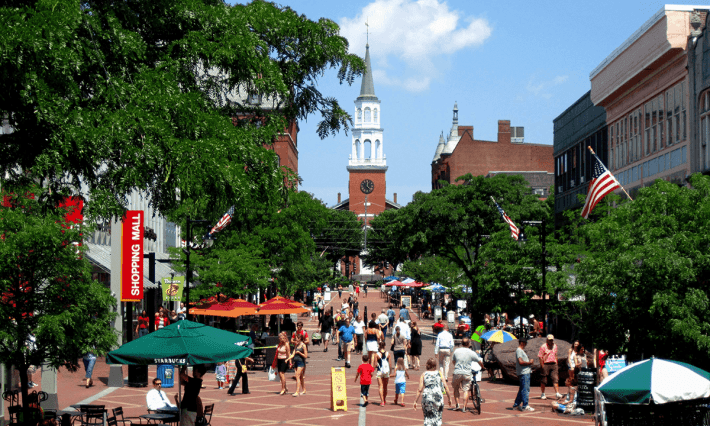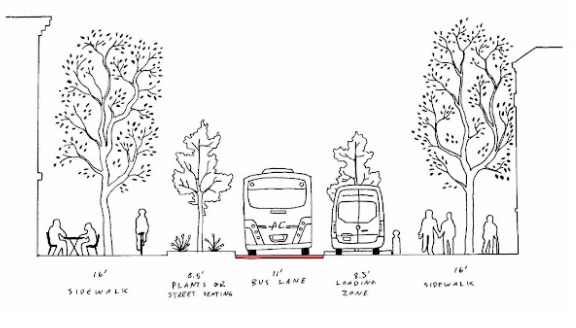Berkeley Students Craft Car-Free Option for Telegraph
4:46 PM PST on January 31, 2022

Note: GJEL Accident Attorneys regularly sponsors coverage on Streetsblog San Francisco and Streetsblog California. Unless noted in the story, GJEL Accident Attorneys is not consulted for the content or editorial direction of the sponsored content.
The city of Berkeley is making plans for a rebuild of Telegraph from Dwight to Bancroft, as part of its "Berkeley Southside Complete Streets Project." It will install bus-only lanes on Telegraph (about time Berkeley) and give "priority to alternative transportation and transit over single-occupant vehicles."
But a group of student-advocates argue that the city's designs still reflect an auto-über alles mentality.
Everything in the four alternatives (see image below) the city has offered starts from the paradigm that private automobiles must be permitted to go anywhere and everywhere as a default, say the students. "In the entire city give us just one place without cars!" said Sam Greenberg, an urban-studies student at UC Berkeley, in an interview with Streetsblog. Telegraph, he pointed out, was originally built around a streetcar line and was designed for pedestrians. "We crammed cars in after. We try to accommodate these massive vehicles on streets that were not designed for them."

That's why Greenberg and fellow student Brandon James Yung co-founded Telegraph for People (TFP), to push for this stretch of Telegraph to become a pedestrian plaza with a dedicated bus lane, as sketched in the lead image.
"You know how students get to campus? They walk Telegraph. And the sidewalks are so inadequate; it's almost embarrassing how much space is given to cars," he said. On the TFP website, the student-advocates give several examples of similar urban streets that were once traffic-clogged by underwent transformations into pedestrian plazas and flourished. They cite Pearl Street in Boulder, CO, State Street in Madison, WI, or Church Street Market place in Burlington, Vermont, seen below:

But what about merchants and their deliveries?
Yung explained that in their design the dedicated bus lane would also be used for deliveries. "We'd have periodic, discrete loading zones that commercial vehicles can access in morning or evening," said Yung. But the bus lane would always be off-limits to private automobiles. Greenberg also points out that there's a massive, underutilized parking structure on Channing, so people who still want to drive to Telegraph still have plenty of access and space to park.
Meanwhile, the students' efforts have attracted the attention of other advocacy groups and City Councilmember Rigel Robinson. “There may be no better neighborhood than Telegraph and Southside to demonstrate what a green, walkable district can look like,” Robinson told the Daily Californian.

The student-advocates also point out that Sproul Plaza, at the top of Telegraph on the college campus, used to have cars too--so they're really only talking about extending an existing concept four more blocks.
Greenberg and Yung hope Berkeley won't repeat the mistake it made in 2012, when it rejected the idea of a dedicated bus lane on Telegraph (something it's now correcting). Because if it rebuilds the street with private cars still in ten years it's going to be rebuilding it again, they said. "The City Council talks about climate urgency, they talk about banning combustion engines," said Yung. "But there's no car-free options for Telegraph? Really?"
Be sure to check out the Telegraph for People plans and find out how you can help.
Stay in touch
Sign up for our free newsletter



